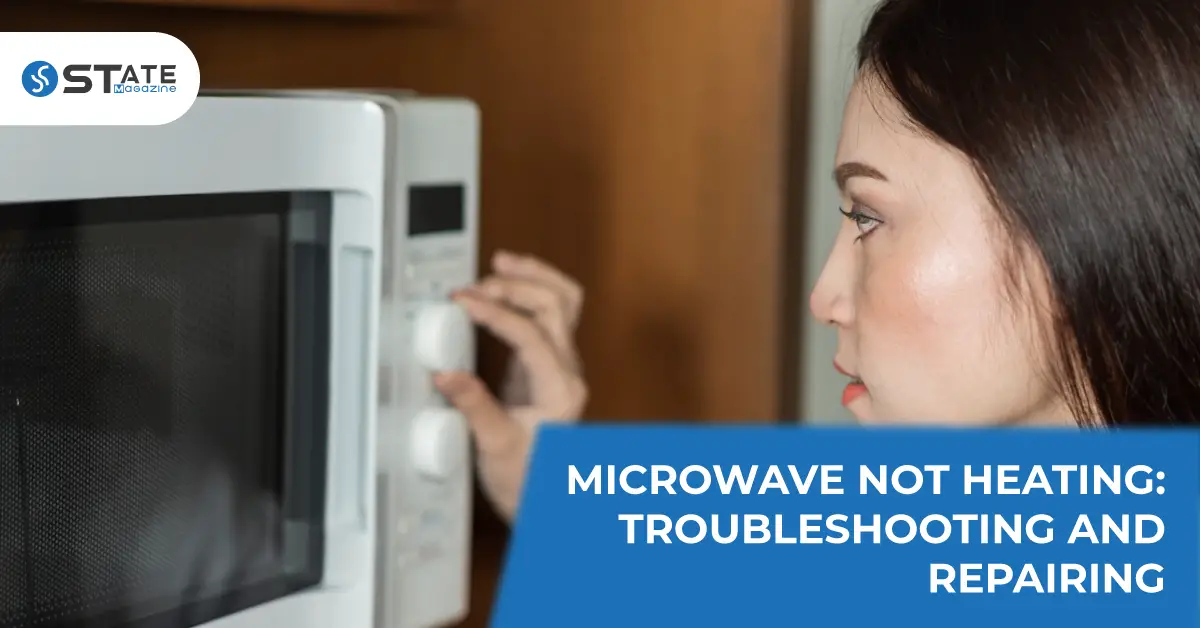It would be frustrating when you are ready for a meal and find your microwave not heating. You might consider repairing the appliance, but it might not be easy to diagnose the problem unless you know what components to troubleshoot. You can refer to this content to identify which parts to check and how to find the defects. You can start by checking the timer, wrong settings, or modes in your microwave. If you find no such errors, then you can get into the depth of investigations. However, it is highly recommended to get the help of an experienced appliance repair technician.
How to Repair Microwave Oven Not Heating?
Contents
These are the components that should be diagnosed for issues if your microwave stopped heating. Nevertheless, you should be very careful in this, even more, cautious than when you deal with other home appliances because the high voltage capacitors can still hold thousands of volts that can cause death due to electric shock.
CAUTION: Do not underestimate microwaves as they are one of the most dangerous home appliances that can cause personal harm. The high voltage capacitor can hold a very large voltage that can cause electric shocks and even death. So these capacitors should be discharged correctly before handling any component in this. Always get a technician to carry out this work as they are qualified and trained for the task.
1. Door Switches
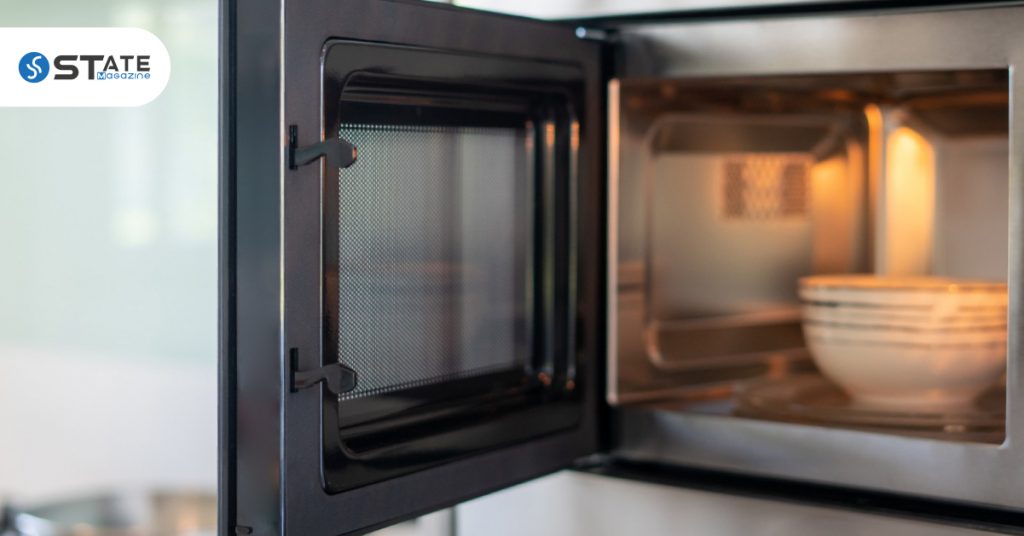
The microwave door switch is designed with an inbuilt safety mechanism to prevent it from operating if the door is not closed properly. Once the door is latched correctly, the signal is transmitted to start. So if the door switch is damaged, the microwave would look like it works with the fan and motor in function. However, the microwave turns on but doesn’t heat. You would realize this only after you find that your food has not been cooked after all the time. Use the following method to diagnose this.
- Do not try slamming the door as it would worsen the damage.
- Close the door firmly and check again whether the door latches properly. If there is a mechanical button, try pushing it down firmly when closing the door and releasing it after it is shut.
- If it still does not seem to work, take off the case and check the terminals of the switch with a multimeter. Check it by pushing down the switch to simulate the closing of the door. If both terminals have continuity, it should read zero on the indicator.
- If it is defective and does not function well, the switch would have to be replaced.
2. High-Voltage Diode
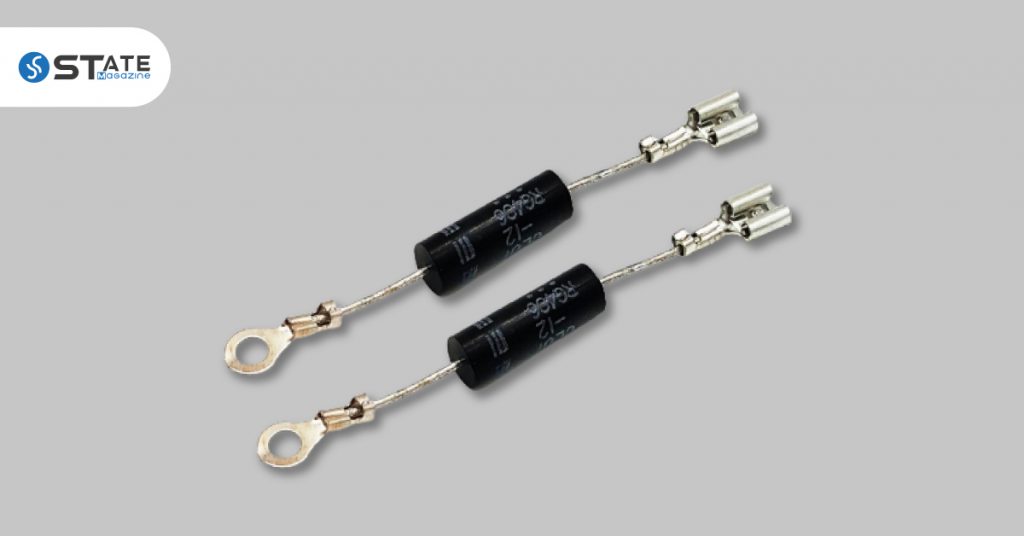
If your microwave works but doesn’t heat, then there is a possibility that the diode might have burnt out. The function of the diode is to convert the AC power supply to DC and allow electrical current flow in only one direction. So if this fails, it would be short-circuited, and current can flow in both directions. Sometimes current would flow only to a shorter distance along the path. If this is defective, you can hear a buzzing sound. This component is inexpensive and can be fixed easily. They cost below $20 for most microwaves.
However, be careful to turn off the microwave and unplug it before removing it. When you inspect this, you would be able to notice obvious signs that it is burnt out. They can also go bad over time or from a bad magnetron.
- Unplug your microwave before the inspection and locate the high voltage diode.
- Remove the cabinet and discharge the capacitor. Then remove the high voltage diode to test it for continuity.
- Set the multimeter to Rx1 and touch the probes to the terminals. Then reverse the probes and check for continuity in the other direction. The reading must show continuity in one direction but not the other.
- If the diode does not show continuity or shows continuity in both directions, then the high voltage diode is defective and should be replaced.
3. Magnetron/ Heating Element
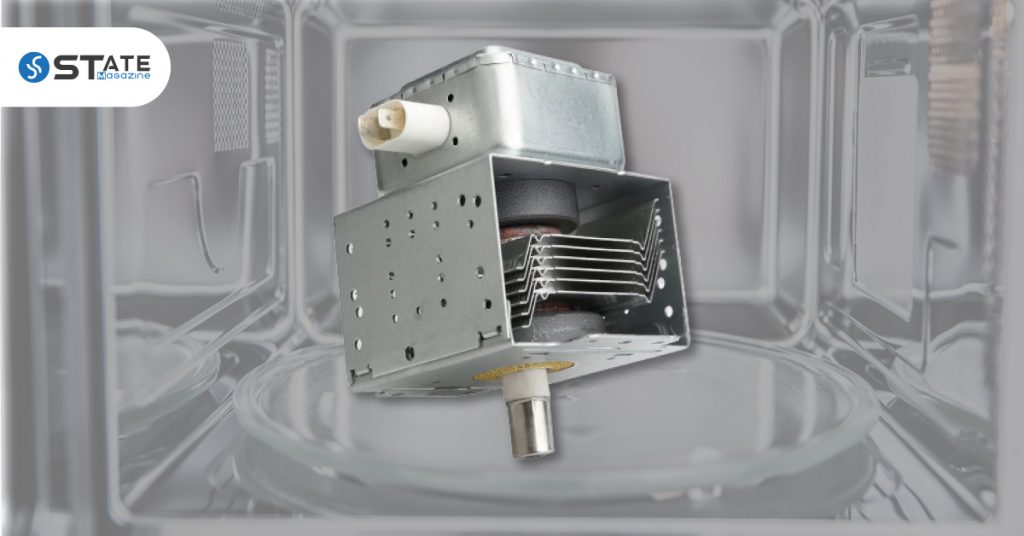
The reason for your microwave not heating can also be due to a problem in the magnetron. This is a part of the high voltage circuit and creates the microwaves necessary to generate heat. A defective magnetron can cause the fuse to blow while other functions would operate. So replacing this fuse is not a good solution as the real problem is still unattended. This can be checked and fixed as follows.
- Remove the cabinet to access the magnetron. Disconnect the power and discharge the high voltage capacitor to prevent electrical shock.
- Locate the magnetron and disconnect the two wires attached.
- Check for continuity by attaching the leads from a multimeter to the magnetron terminals.
- Only 2-3 ohms of resistance should be indicated between these terminals. If there is no continuity, then the magnetron needs to be replaced.
- It is also necessary to check for continuity between both terminals and the grounded outer case of the magnetron.
- If there is any continuity between either of these terminals and the ground, the magnetron needs replacement.
- If the continuity checks show no defects, then live voltage tests may be required. This should be referred to a qualified person.
4. Thermal Fuse
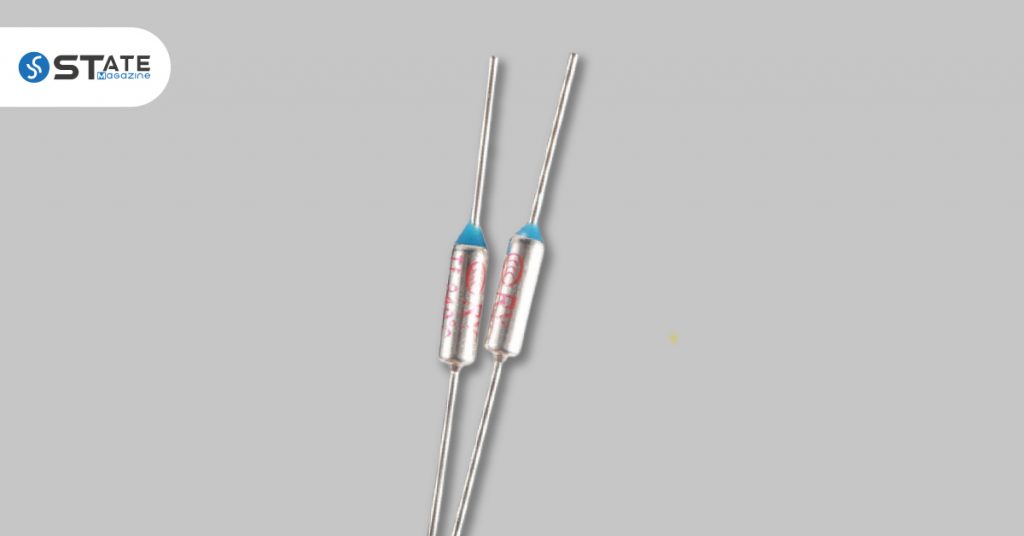
The thermal fuse acts as a thermal protector, just like for all other appliances. Once a component gets overheated, the thermal fuse would blow out to protect the appliance. This needs to be replaced as fuses cannot be repaired. You can get the relevant part from the manufacturer and replace it. The high voltage capacitors can store up to thousands of volts of electricity even after unplugging the microwave. Therefore, it is extremely dangerous to replace electronic components of microwaves due to the potential of electric shocks. The thermal fuse should be replaced only by a licensed technician.
5. High Voltage Capacitor/ Transformer
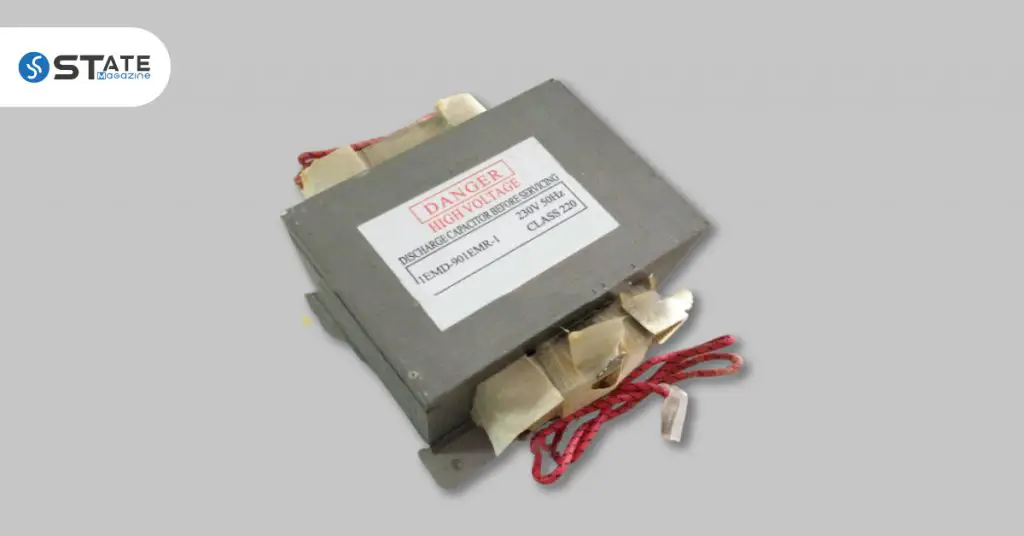
These components work to power the magnetron with the high voltage diode. These components are difficult to be replaced and also expensive. So, if there is an issue in this part, it would be better to replace the whole appliance unless your microwave is entirely new and high-end. If the transformer is blown out, it would be visible to be arched and emit a smell. The high voltage transformer should be replaced only by a licensed technician due to the high risk of potential electric shocks. Even after the microwave is unplugged, the high voltage capacitors can store thousands of volts. It should be discharged properly by a professional before repairing a microwave.
6. Control Board
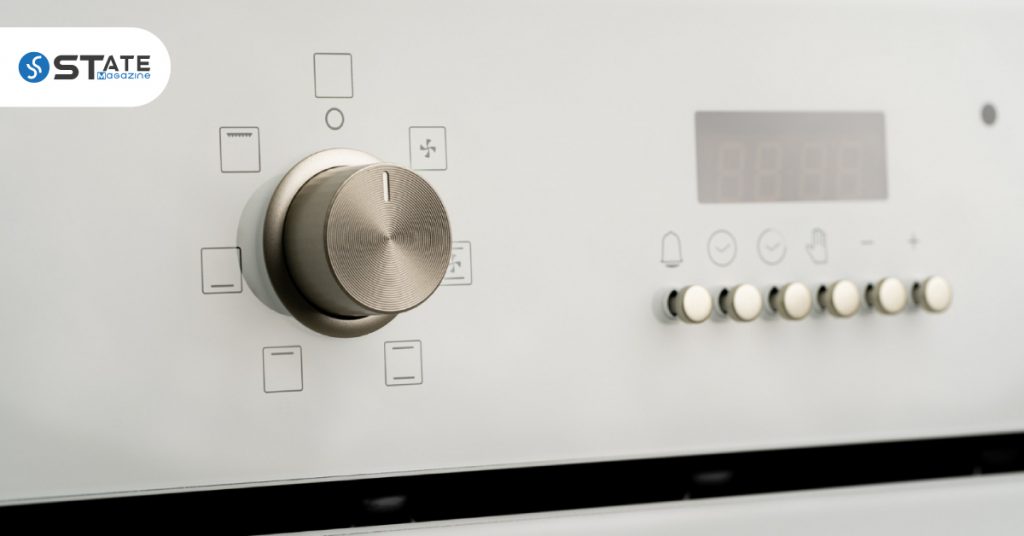
The control board is responsible for controlling everything in the microwave. So if this fails, anything can go wrong, and you would even find that your microwave has stopped heating. If all other components are checked, and there is no issue with them, you can try troubleshooting the control board. However, it has a complex mechanism in replacement, and you would need professional help to test and replace it. If your microwave is not brand new, then it might even be better to purchase a new one than to replace the control board.
Repair VS Replace a Microwave
Even though the microwave is one of the cheapest kitchen appliances, many homeowners prefer to fix what is wrong instead of shopping for a newer model. But there are factors to consider when deciding on repair over replacement. Microwaves are built to last 8-10 years, so if yours is older than 6 years, it is better to go for a new one.
Higher-end models cost $1,000 or more to replace while it takes only a few hundred to repair. Lower-end models that cost around $300 are better to be replaced than going for average repairs of $150. If your microwave sparks, smokes, or has a burning smell, then it is not safe for use and should be replaced. When there are issues of microwave not heating or if your microwave turns on but doesn’t heat, the repairs may even cost more than a new appliance.
Frequently Asked Questions

Why is my microwave not working but has power?
The problem might be in the line fuse. If current flows more than the required amount, then the fuse would blow out. This can be diagnosed by testing the fuse with a multimeter.
How much does it cost to repair a microwave?
The average range of cost for microwave repair is from $100 to $200. The replacement of a burned magnetron or transmitter would cost around $150, while a minor replacement such as a fuse would cost around $50. However, larger repairs such as control board replacements cost up to $500.
What is the microwave repair price by time?
- Countertop: $50 – $350
- Built-in: $50 – $500
- Over the Range – $50 – $500
What is the average cost of microwave repair by type of repair?
(with labor included)
- Fuse: $50 – $100
- Door Switch: $50 – $100
- Diode: $50 – $125
- Filter: $50 – $125
- Handle : $75 – $125
- Plate: $75 – $150
- Fan: $75 – $200
- Magnetron: $100 – $300
- Transformer: $100 – $300
- Touchpad: $100 – $300
- Control Board $100 – $500
- Door Glass: $150 – $400
- Door: $200 – $500
Conclusion
You are strictly advised not to try anything related to the removal of components or any form of repair if you are not experienced or qualified for the task. If you are not confident in handling any troubleshooting, then do not try anything over mere observation of the appliance since microwaves have a very high potential of electric shock due to improper discharge of high voltage capacitors. So it is always a good choice to get your technician to handle the troubleshooting and repairs.
If this content has helped you in investigating the reasons why your microwave works but doesn’t heat, you can find similar articles to help to fix your home appliances. You can refer to reasons for your Samsung Oven Not Heating, LG Refrigerator Problems, and why your Bosch Dishwasher Won’t Start.

